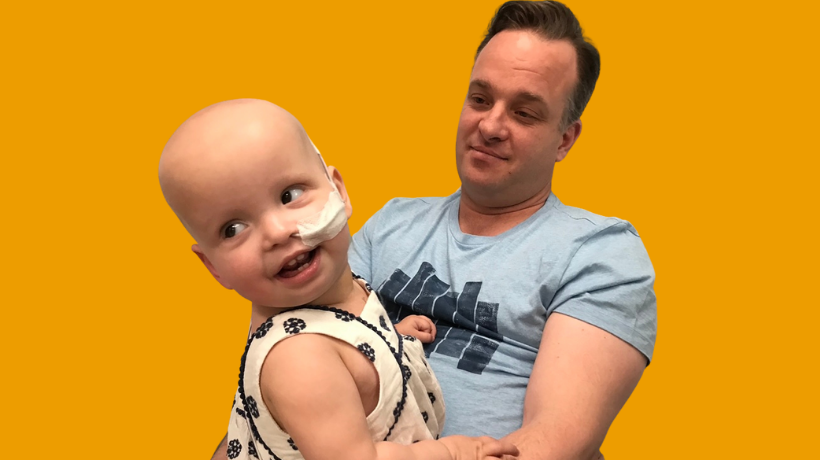
Adelaide Tonkin was just five months old when she was diagnosed with rhabdomyosarcoma, a rare and aggressive form of cancer that affects muscle cells.
Her parents, Laura and Nathanael, had taken Adelaide to hospital after she rolled off the couch in March 2018 and bumped her head. It was then that they noticed a swollen cheek. When the swelling didn’t subside, an ultrasound revealed an enlarged lymph node. Subsequent tests led to the diagnosis the Tonkin family had feared.
“I remember sitting on the red chairs outside the double doors to the recovery area of the hospital, waiting to hear the results of Adelaide’s MRI,” says mum Laura. “When the oncologist finally came out, a paediatric surgeon was with him. They told us the scan had shown a mass in the right side of her face and they needed to do a biopsy straight away while Adelaide was still under the anaesthetic.”
The results took 48 hours – a time Laura describes as “absolutely excruciating”.
“When the call came through, I couldn’t answer the phone. My husband took the call, and I went out to the backyard. It seemed to take forever, so I went back inside just as the phone call was finishing, and I heard the word ‘rhabdomyosarcoma’.”
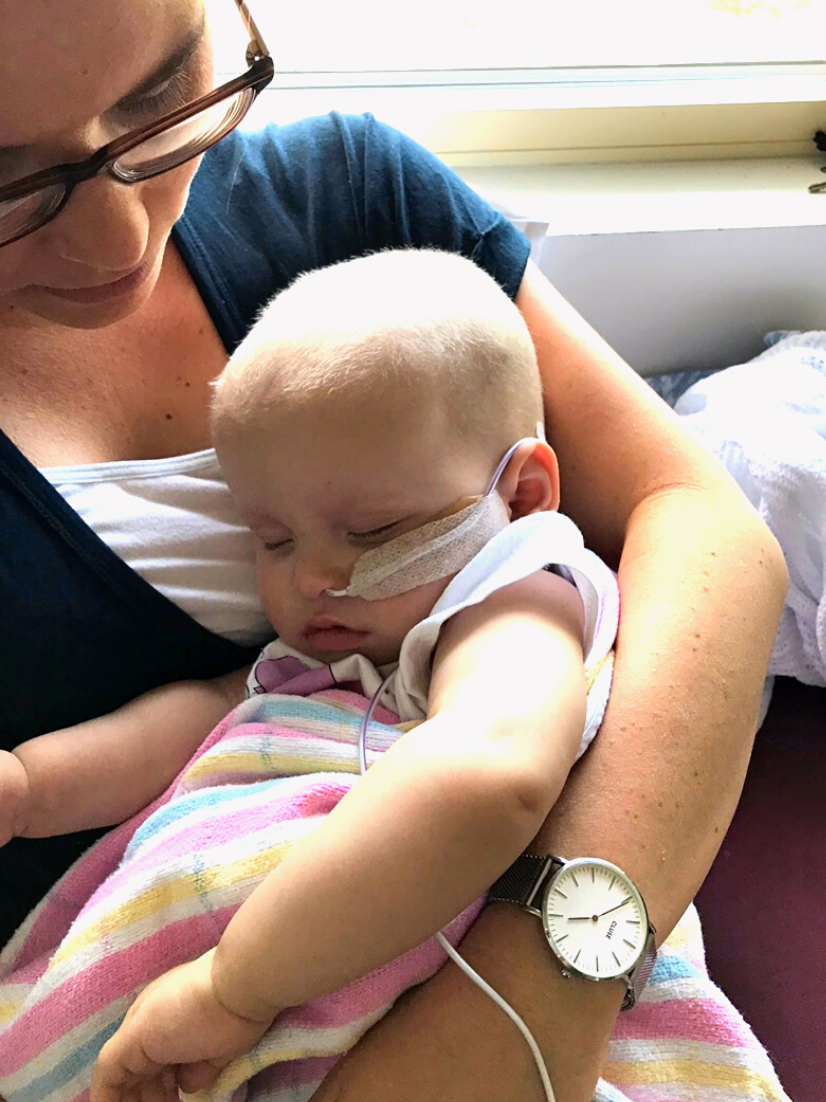
The path to treatment
Rhabdomyosarcoma is a rare form of cancer that typically affects muscle tissue in children and adolescents. In Adelaide’s case, the tumour was in her jaw muscle. Her frontline treatment protocol comprised of 40 weeks of chemotherapy, including some scheduled rest weeks to allow her blood counts to recover.
The chemotherapy drug, vincristine, is used to treat a range of paediatric cancers. But in some children, like Adelaide, its use can cause major side effects due to vincristine-induced peripheral neuropathy (VIPN). This is characterised by numbness, tingling and neuropathic pain in the extremities and motor weakness that arises from damage to peripheral nerves.
Behind the science: Developing treatments for vincristine-induced neuropathy
“When Adelaide learned to sit up by herself with her legs out in front, we noticed that her feet didn’t naturally point up to the sky,” explains Laura.
"Her feet were almost parallel to the ground. Not long after this, her hands started flopping downwards and her eyelids began to droop.”
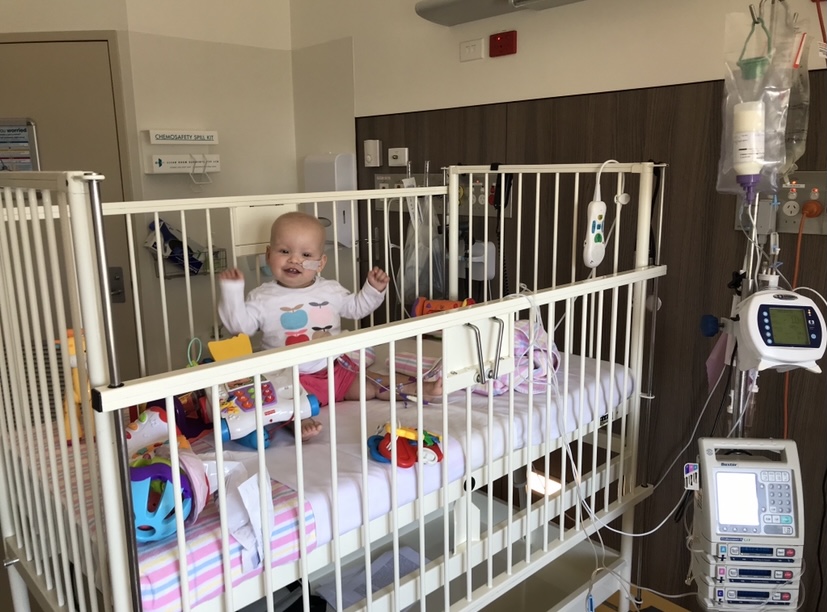
In Adelaide’s case, the VIPN side effects were so severe that her doctors reduced her dose of vincristine.
“They dropped the dose by about 30 per cent, which of course made us nervous,” says Laura. “When Adelaide was about 19 months, she started radiation, but she was only walking on her knees by this time because she didn’t have the strength in her feet to stand up.”
A solution in science
The Tonkin family made the bold decision to move to the US so Adelaide could access proton radiation therapy, a targeted form of radiation not available in Australia.
“Because the tumour was in her jaw, the type of radiation available in Australia would have meant hitting her brain, which, for a one-year-old, would have led to severe cognitive impairment.”
Adelaide completed her frontline treatment protocol in March 2019 and began maintenance treatment the following month. The painful symptoms of VIPN began to slowly subside – her eyes and her hands were less droopy, but she continued her walking on the knees for some time.
“Her physiotherapists had to give her ankle-foot orthotics because her muscles were so weak. She could stand up holding onto something, but you could see her legs wobbling,” Laura says. “She was also given a walking frame."
Adelaide began walking on her own just before her second birthday. Now aged three-and-a-half, her cancer is classified as ‘stable’.
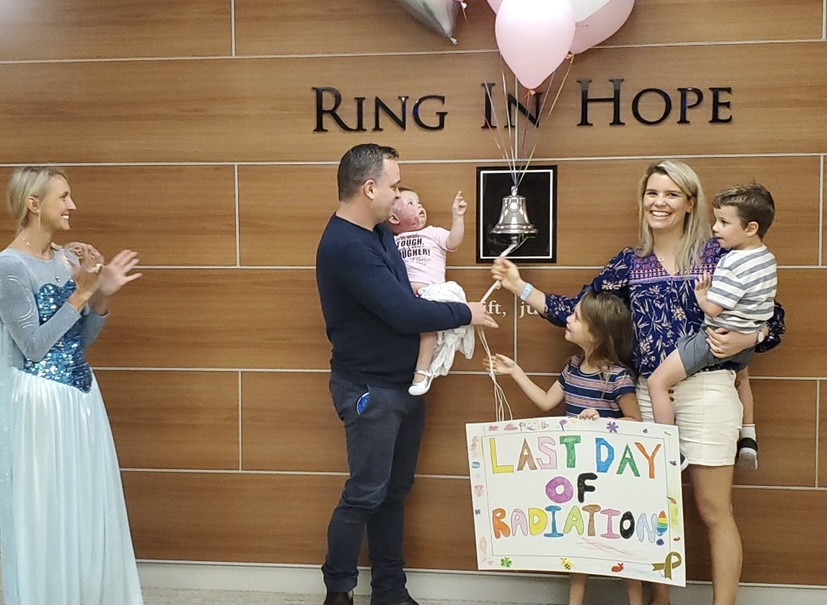
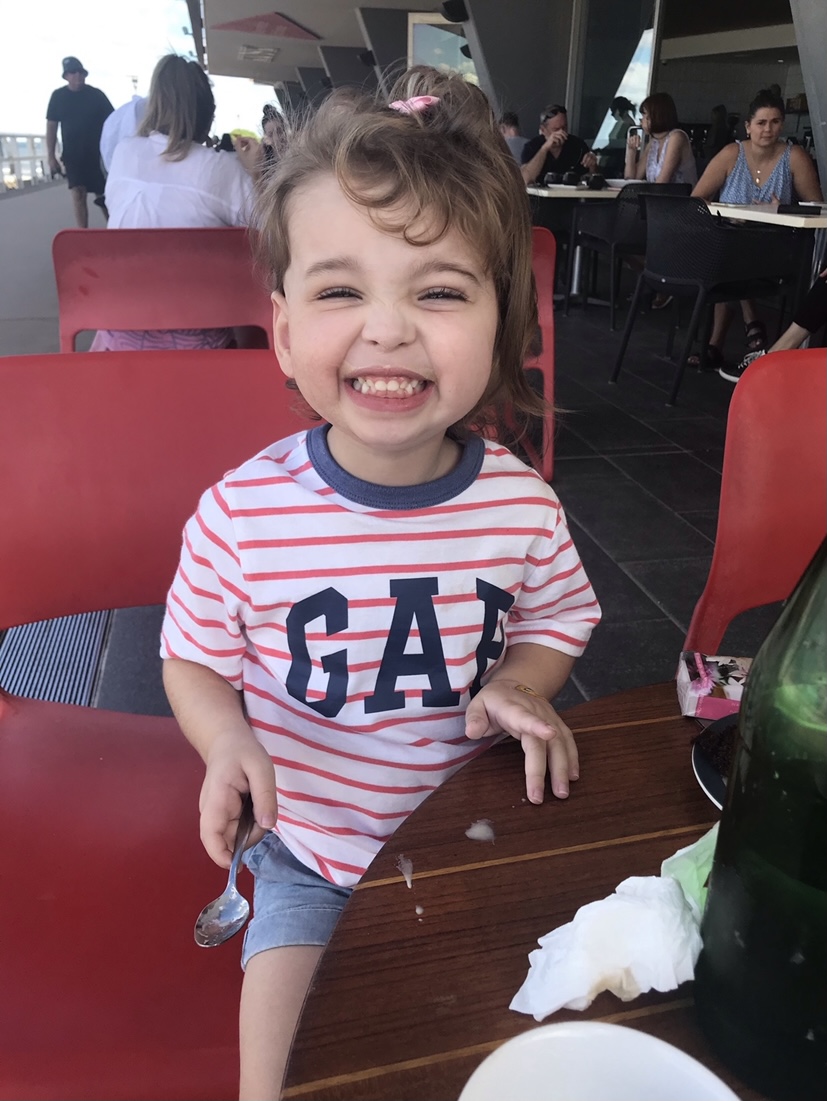
“For solid sarcomas, particularly ones like rhabdomyosarcoma, which has a relapse rate of about 30-40 per cent, doctors don’t tend to use the word ‘remission’ for the first five years,” Laura explains.
“The neuropathy caused by the vincristine was debilitating, although the side effects of Adelaide’s radiation treatment were horrific,” she says. “It seems cruel that the most effective ways to treat the cancer can have these kinds of side effects."
"I’m hopeful that research can lead to much kinder treatments. We needed to give Adelaide the best chance of survival.”
